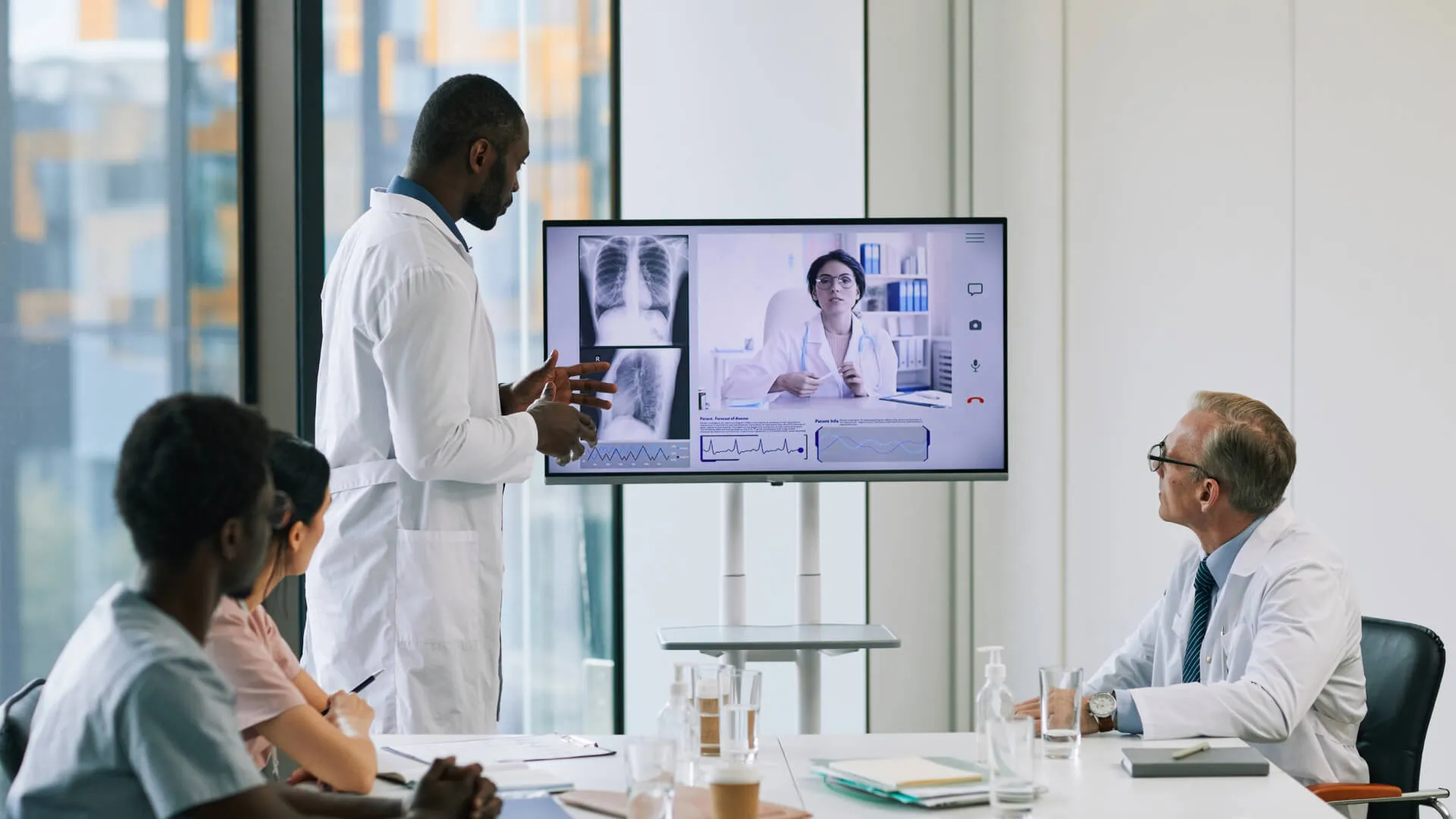What can Video Conferencing Do for Healthcare?

“Healthcare has always been a progressive field and those involved – from researchers to physicians to IT leaders – are driven to find better, more efficient methods,” says Tom Racca, president and CEO of BurstPoint Networks, developers of an enterprise-class.
“There have been great advancements in technology and some in IT have realized the new potential of video. Concerns over bandwidth consumption have been answered, and today, a single person with a laptop can create, manage and deliver video content with a ‘reach’ and capabilities that are actually shaping the delivery and progress of healthcare itself.”
By using video conferencing technology when applicable, healthcare practitioners and patients can reduce the costs associated with regular office visits. Physicians can be anywhere monitoring and collecting patient information while the patient remains in the comfort of his or her home. As well as reducing unnecessary costs and travel times, this can be particularly beneficial to patients with mobility issues or environmental concerns for whom it would not be ideal to visit a hospital or clinic.
“As we move into high-definition video conferencing, clearer pictures and shorter time lags make it easier for doctors to support clinical diagnoses and consult with patients.”
Whether managing a large urban hospital or a small rural facility, healthcare IT managers report that video conferencing has successfully addressed a host of educational, managerial, and patient challenges.
After conducting lengthy interviews with seven healthcare IT managers across the U.S., researchers report that video conferencing helps solve at least 10 key challenges which have impacted their organization positively.
Specifically, video conferencing has helped healthcare facilities to:
1. Increase patient access to specialists and improve level of care
Video conferencing has allowed one hospital access to more trauma specialists from other locations. By providing residents the ability to remain in their home community for care, patient outcomes are improved. Says one IT manager, “We can’t seem to recruit physicians, specialists in particular, to this location. To support such scalable telehealth platforms, many institutions utilize healthcare development services to build secure, feature-rich remote care tools. They leave after a year. Video conferencing has enabled us to have access to certain specialized services.”
2. Improve delivery of treatment
The creation of a central monitoring station that is remote to any hospital in the system has changed the way ICU care is delivered at a 600-bed teaching hospital and associated network in Pennsylvania. Vitals and status of patients are monitored constantly from a control console. The staff can call codes, initiate treatment orders, and determine if patients are ready for a step down unit. “We have never changed the level of staffing on the floor even though
we have increased the usage of and advanced the level of care in the ICU,” reveals the IT manager.
3. Reduce the need to transfer patients and thus retain revenues
By using video conferencing to provide specialized ongoing care to patients, it creates more revenue opportunities for a hospital and network of clinics in upstate New York. In the past, these patients would be transferred to other hospitals.
4. Recruit top doctors
Technology, like video conferencing, has proven to be an important element in recruiting physicians. “As younger doctors become the power brokers in the hospital, more technology is being used because they demand it,” says an IT manager.
5. Achieve acquisitions strategies below budget
An upstate New York hospital has been able to add new facilities to its portfolio without significant incremental
travel spending by integrating the new facilities into their system through video conferencing.
6. Recruit and train more nurses
Video conferencing helps address the nurse shortage in many hospitals. One hospital found that nurses who are trained in their local communities through video conferencing tend to remain in those communities in larger numbers than those who are trained elsewhere.
7. Improve ongoing staff training
At a Midwestern network of clinics, new employees are trained in larger groups across multiple locations for common issues like benefits, hospital policies, or compliance. In addition, new information can be presented to several locations in a single session. For example, if the nursing desk application has been updated, teams of nurses can be trained at the same time rather than one at a time.
8. Reduce meeting overload
Regularly scheduled management and staff meetings are conducted via video conferencing. By making it easier for staff to attend, meeting attendance has improved. “There is no way we can afford the inefficiency of having managers or residents travel three or four hours for a meeting,” says one IT manager. Plus this healthcare facility is able to reduce travel costs and increase patient care as there are fewer staff absences.
9. Satisfy C.M.E. requirements
At New York and Philadelphia-area hospitals, doctors who had trouble finding time to travel to continuing education courses kept their skills sharp and certifications up-to-date by taking the courses through video conferencing.
10. Meet green initiatives
Video conferencing reduced the amount of travel and the associated carbon footprint, meeting the environmental objectives of one hospital.